On the last Saturday of June 2019, I found my way to L.L. Stub Stewart State Park off Oregon Highway 47 to meet up with some very nice folks from the Rose City Astronomers and a small group of also very nice beginning amateur astronomers – among the latter of whom I count myself. For even though I happen to work for the world’s best-known maker of astronomical instruments, I am in charge of developing its small optics – binoculars, spotting scopes, and microscopes. Astronomy, to me, is still an area in which I am very much a beginner.
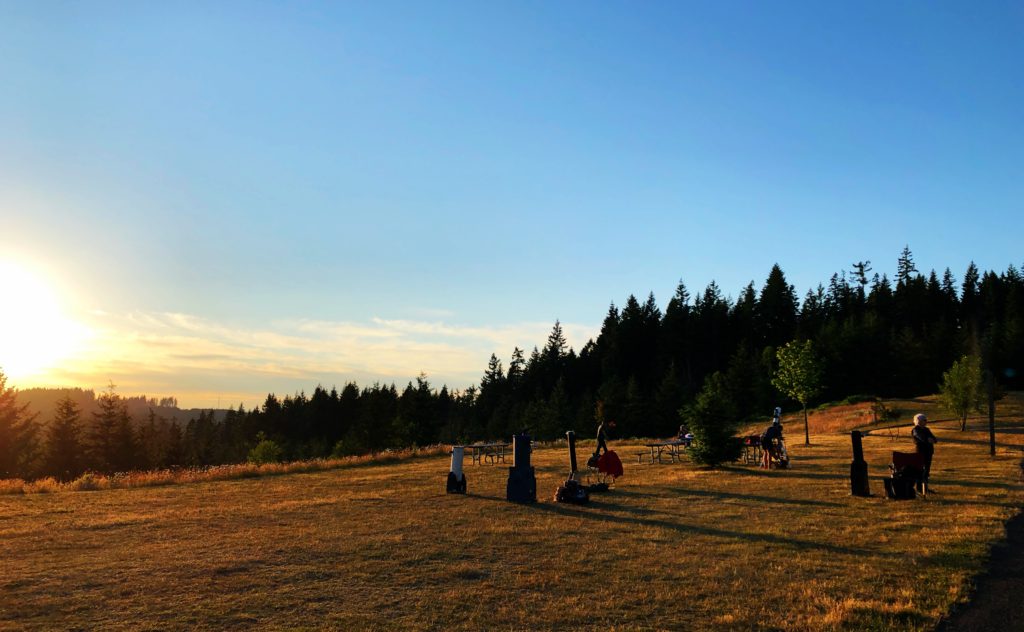
However, curious little monkey that I am, I think it’s important to learn as much as I can about the many fields that are – or at least were – classed as natural history or natural philosophy. (I also think that in working for Celestron, it’s my responsibility to understand as much as I can about the subject in which the company has made a name for itself and in which it continues to do the majority of its business – to do anything less on my part would simply be irresponsible.) Thus not so very long ago, the learning of visual astronomy was added to my ever-growing to-do list. The challenge was in how to do it.
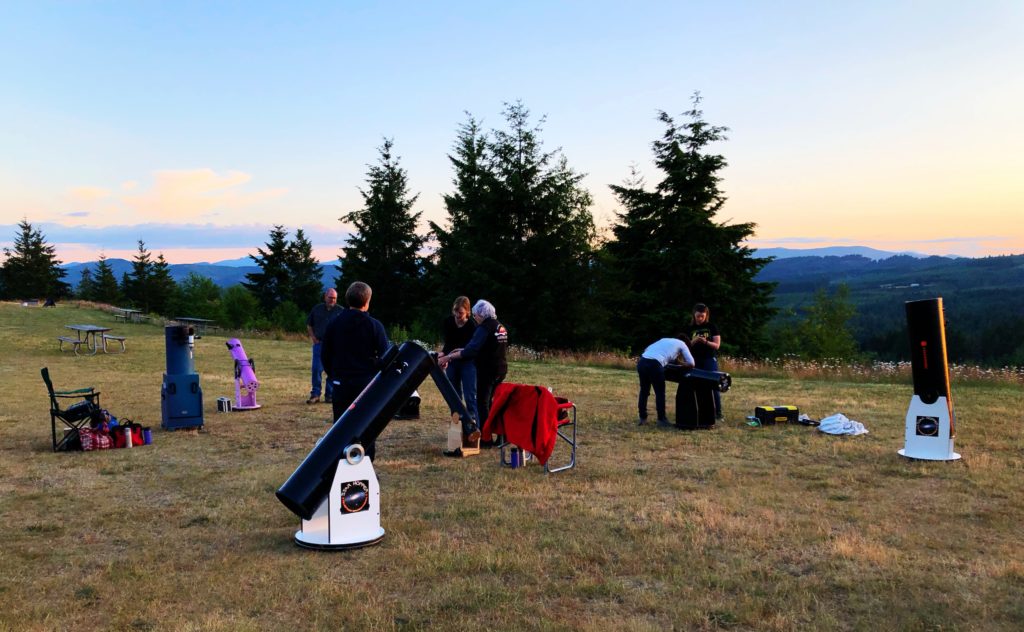
Like many areas of activity, much of the history and practice of astronomy can be learned from books, but to really get the hang of it requires getting out in the field with an optical instrument and looking up at the sky. But then what? There are an astonishing number of points of light up on the darkness, and making sense of them isn’t quite as easy as sorting out the local birds in a park. Best to get a bit of instruction whenever possible.
The challenge with this is that amateur astronomy is one of those activities most actively practiced by clubs. Therefore finding a club to join is very valuable indeed. This is where some birdwatchers reading this may find themselves thinking “oh good heavens – birders’ nights dominated by crotchety old men quibbling with one another and making everyone less experienced feel inadequate and unwelcome; no thanks!”
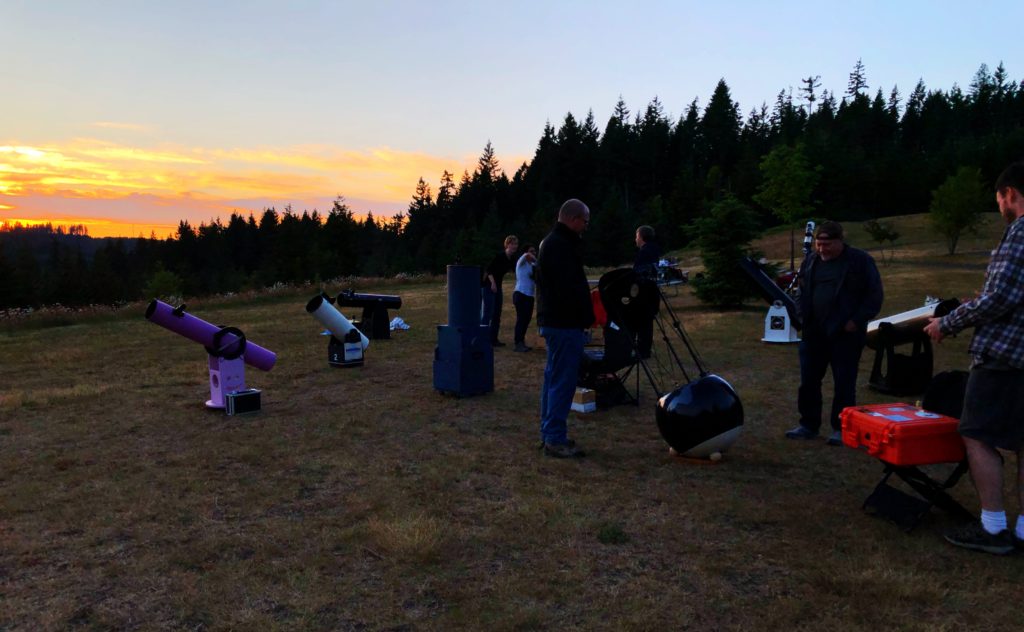
While I can’t speak for all the clubs to be found, the closest one to me (a somewhat relative spacial reference, living in rural Oregon as I do) is the Rose City Astronomers. Far from crotchety, or old, or even dominated by men, the RCA is a vibrant, diverse, and remarkably active group with regular meetings that feature national-level speakers, workshops, and a host of activities fo their members, as well as a strong outreach arm that spends a truly commendable amount of time bringing the practice of amateur astronomy into a wide range of public venues.
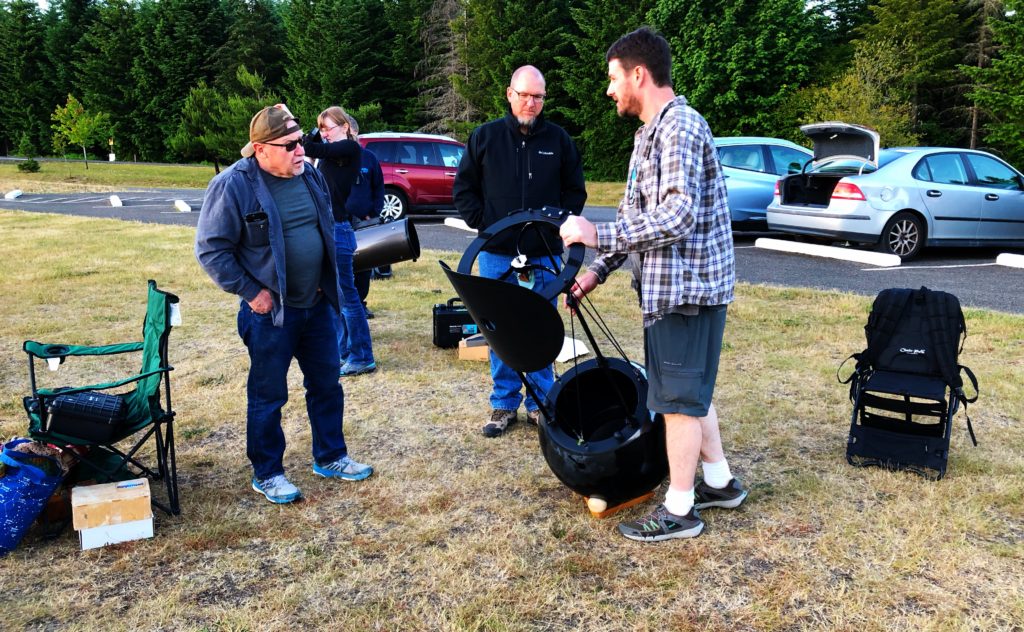
Among their many activities, they hold what are known to the astronomy community as “star parties.” These are gatherings of astronomers in locations far enough away from too many city lights so as to allow for the dark skies necessary for particularly successful observing. Not that one can’t look up into any clear night sky and find something interesting to see – it’s just that by seeking out a particularly dark sky, the opportunity to find and gaze in awe at nebulae, binary stars, and other celestial wonders becomes much greater.
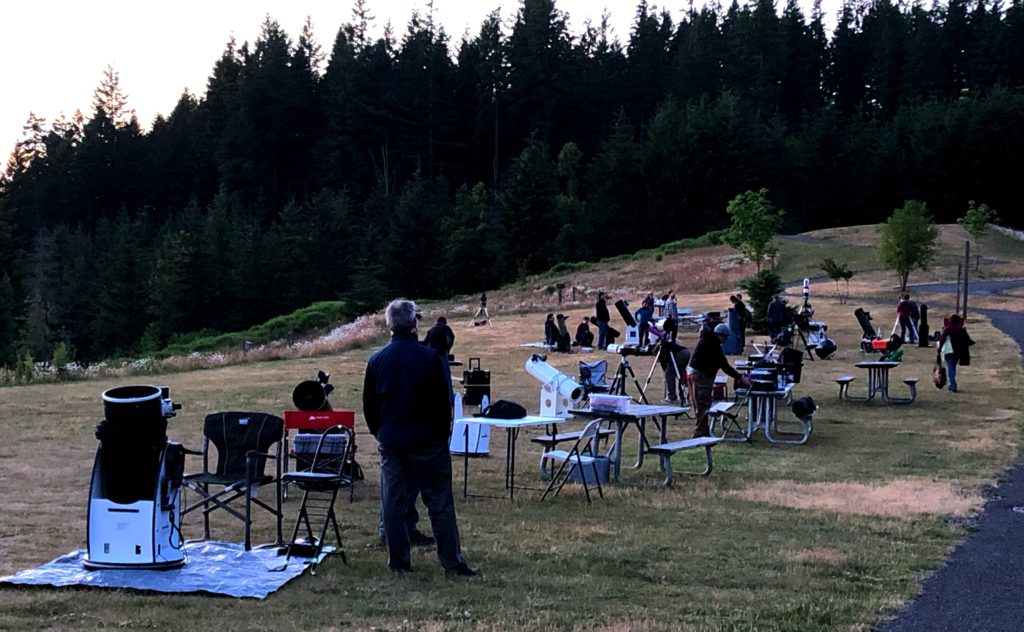
For the RCA, Stub Stewart State Park is one of the “go-to” star party locations. Far enough away form the Portland metropolitan area yet reachable from it after a no too long drive, this relatively new state park offers an exceptional open-horizon hilltop location, complete with clean, well-maintained, and astronomy-friendly restrooms (RCA has worked together with the park management to illuminate the one nearest the popular observing site with red lights so as to allow the observers to preserve their night-adjusted vision even when nature calls).
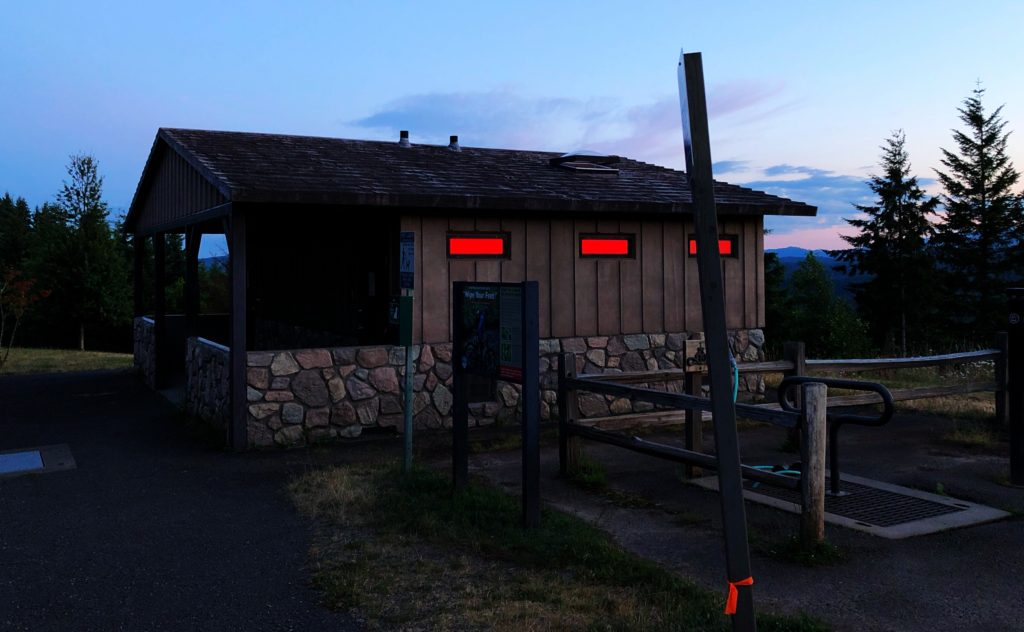
Thus it was to this spot that I drove for one of the RCA’s Beginners Star Parties – and I was extraordinarily glad I did! For while I have been reading (naturally) about the how’s, why’s, and when’s of the subject, I had never quite gotten the hang of finding much in the sky – other than the Moon – of which I could make heads or tails. I’d known about star parties, of course, having gone to the meetings and heard people talking about them, but to be honest, I knew they were guided by a particular code of etiquette – violation of which would understandably not be well received by those in attendance – and I didn’t wish to make myself a nuisance; therefore I simply stayed away.
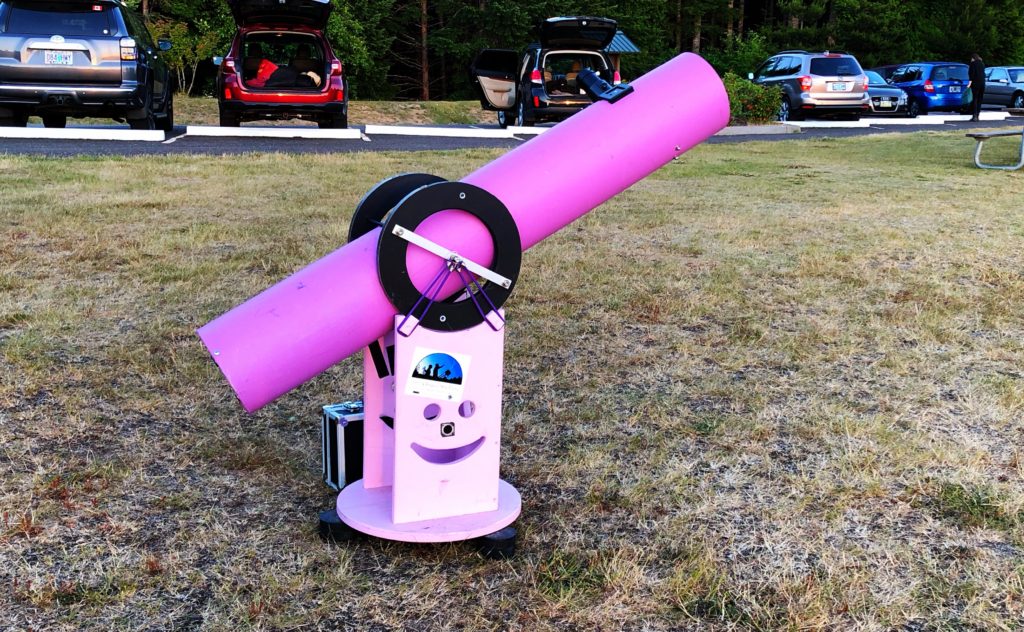
That’s why I was so glad to finally be able to attend this particular event. Not only was it intended to help beginning astronomers learn how to locate objects in the sky, it was also an introduction to the basics of what to do and not do at such events. In all honesty, the etiquette isn’t all that complex – but it certainly made it much more pleasant to venture into my first such gathering knowing that not only would by inexperience be understood, it would be welcomed, and gently and good-naturedly corrected if and when needed.
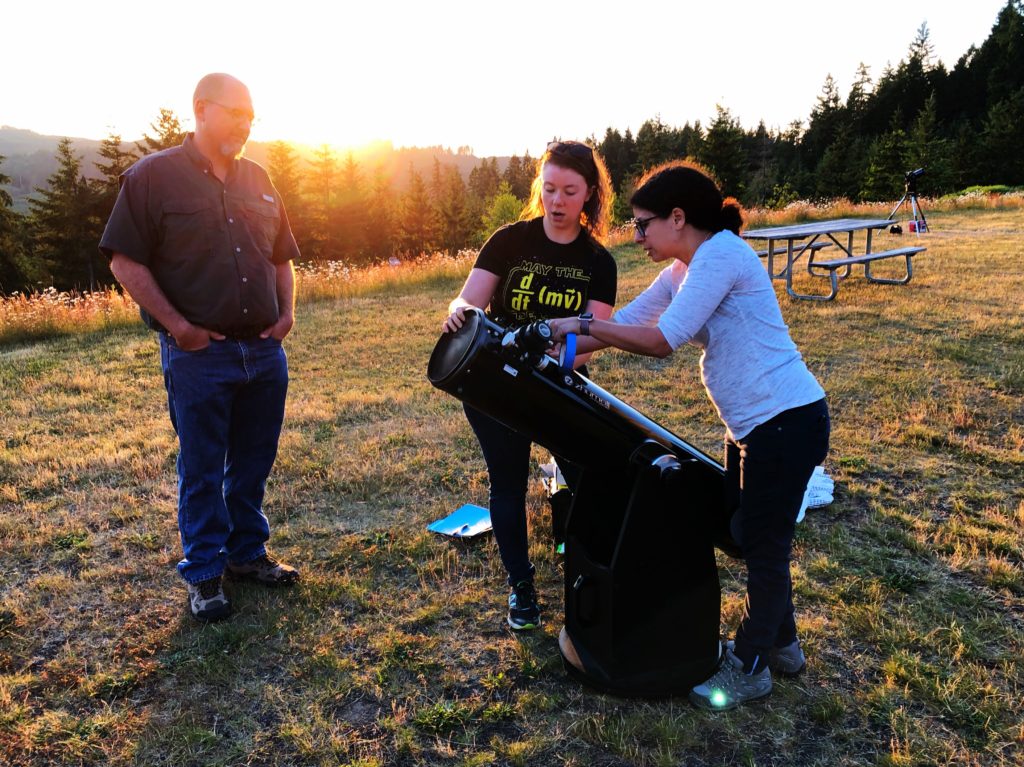
The RCA volunteers hosting the event, Yara, Kelsey, Alexe, and Brett, were some of the most pleasant, enthusiastic, and helpful people it has yet been my pleasure to meet – not only in the astronomy community but far beyond it as well. Arriving early, I was immediately welcomed and made to feel “one of the gang.” As the sun set, Kelsey took the lead as chief instructor for the evening, delivering an easy-to understand and follow presentation, and then along with the rest, perpetually buzzing from one person to another, helping everyone to find the planets, stars, and other objects pointed out by her vividly green laser pointer.
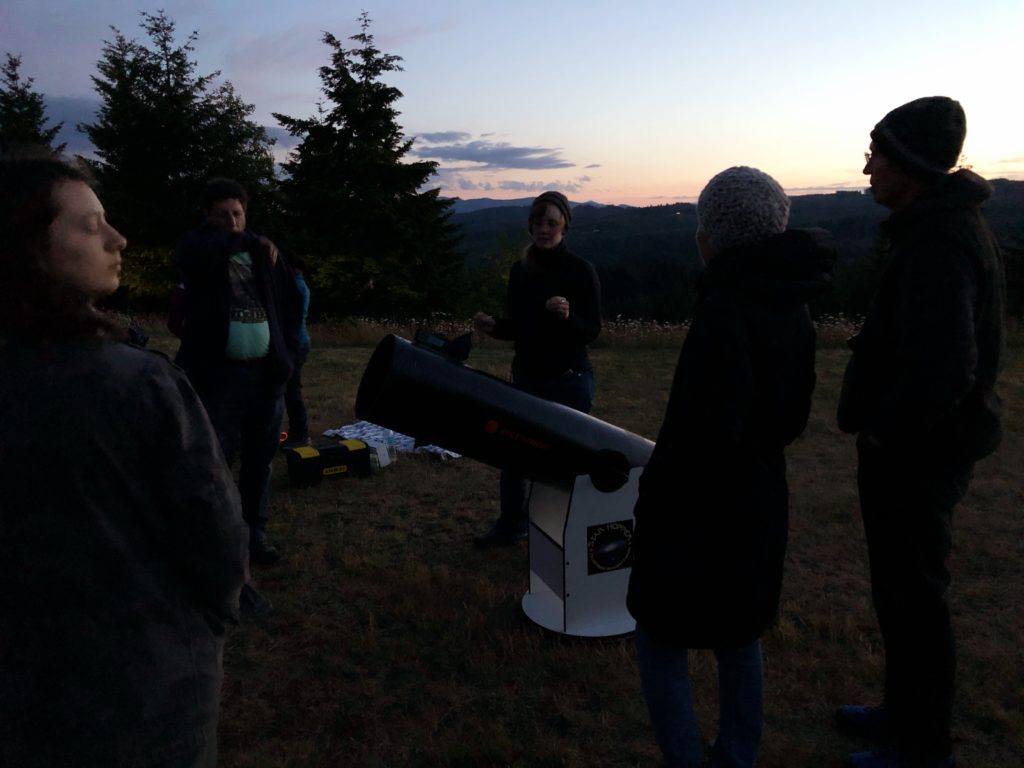
This type of educational outreach event is one that I very much hope is common among many of the astronomy clubs throughout the world, as the value it brings to the continuation and strengthening of amateur astronomy is beyond measure. It is also a model that I hope is, or will be, emulated by a range of other amateur natural history clubs, be they bird, insect, rock, plant, mammal, or otherwise oriented. It is truly incumbent upon all of us who have knowledge in our respective areas of study to help spread what it is we find interesting and enjoyable about them so as to give others the opportunity to discover them themselves, and perhaps become an enthusiast of them as well.
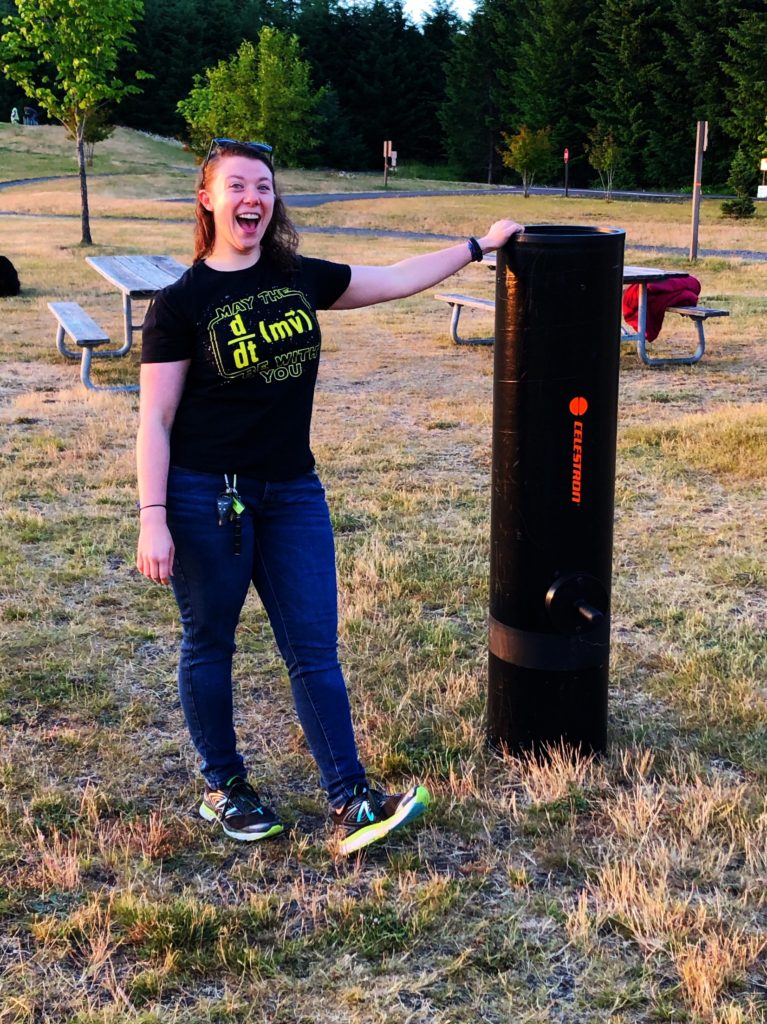
I heartily thank the Rose City Astronomers, particularly Yara, Kelsey, Alexe, and Brett, as well as any and all others involved in the staging of this star party, as well as all the other outreach events they hold. Their understanding of the subject and their enthusiasm for sharing it with others is truly commendable, and I for one hope someday to pay it back in kind.
If you enjoyed reading this, please consider signing up for The Well-read Naturalist's newsletter. You'll receive a helpful list of recently published reviews, short essays, and notes about books in your e-mail inbox once each fortnight.
